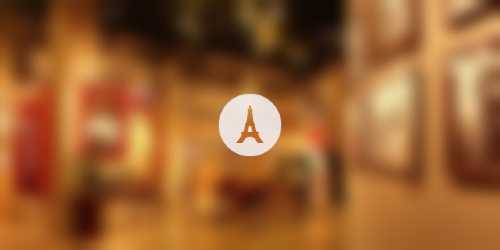Popular Trip Moments
Iksan Dango Cafe with Fresh Bread Every Day | The serene green tranquility of the bamboo forest in Guryong Village, Iksan | Iksan Day Trip: Ginseng Chicken Soup, Prison Dramas & Royal History! 🇰🇷✨ | Iksan City's famous restaurant, Tomare Noodle Factory | A great coffee spot in Iksan | The majesty of Korea's UNESCO World Heritage Site🇰🇷 Iksan Mireuksaji | A retro-themed café in Iksan that feels like a time-traveling train ride. | 💕Let's go to a large cafe in Iksan❣️Good cafe, Cafe Deokgi | Iksan's Large Café, Café Deokgi | 💜🤍Iksan's large cafe, a great cafe for outings, Cafe Deokgi | 💙Iksan large cafe, a great cafe to go on a picnic🩵Cafe Deokgi | 💕Iksan large cafe, a great cafe to go on an outing, Cafe Deokgi💕 | 💖Iksan large cafe, a great cafe to go on an outing, Cafe Deokgi | Hidden Gem of Iksan|Healing Moments in Hwangdeung Garden's Flower Season | Iksan cafe with delicious coffee and great natural view✔️ | A spacious café in Iksan perfect for a cool summer date. | Enjoying music while drinking coffee in a nice atmosphere😛 | A fun Iksan coffee tour where you can choose coffee beans🫣 | Indoor dating spot in Iksan with a variety of bread options | Iksan Museum with Seven Concepts😛 | Enjoying a cafe trip in Iksan while eating sandwiches🤣 | Museum with a Spooky Shamanic Room | A serene and beautiful church in Korea | Stress-Free Historical Trip to Iksan 🩵 | A place where you can glimpse the past of Iksan 🩵. | A travel destination in Iksan where you can truly feel the passage of time. | Must-Visit Spot in Iksan! | A spacious two-story café in Iksan, perfect for a date. | A cozy café in Iksan's Mohyeon area, perfect for quiet conversations. | A journey to Iksan filled with timeless charm
Recommended Attractions at Popular Destinations
Attraction near Bangkok | Attraction near Manila | Attraction near Tokyo | Attraction near Taipei | Attraction near Hong Kong | Attraction near Seoul | Attraction near Kuala Lumpur | Attraction near Los Angeles | Attraction near Shanghai | Attraction near New York | Attraction near Shenzhen | Attraction near Osaka | Attraction near Singapore | Attraction near London | Attraction near Guangzhou | Attraction near San Francisco | Attraction near Beijing | Attraction near Macau | Attraction near Bali | Attraction near Jakarta | Attraction near Paris | Attraction near Ho Chi Minh City | Attraction near Istanbul | Attraction near Phuket | Attraction near Chicago | Attraction near Seattle | Attraction near Toronto | Attraction near Orlando | Attraction near Cebu | Attraction near Chiang Mai
Popular Attractions
Two Rivers and Four Lakes | Punting On The Avon (Antigua Boat Sheds) | The Ancient City | Daming Palace National Heritage Park | Asakusa | SHIBUYA SKY | Manila Ocean Park | St Paul's Cathedral, Melbourne | Longjing tea fields | Singapore River | Universal Studios Singapore | The Sanctuary of Truth | Mount Fuji | Te Anau Glowworm Caves - RealNZ | Lake Ashi | Sky Candle Peak | Hot 'n' Cold | Milford Sound Scenic Cruises | Whakapapa | Xi'an Drum Tower | Dih Baba Temple | The Lakes Course at Vidanta Nuevo Vallarta | Masjid Al-Ihsan | Place Saint-Étienne | Boudins Park | Chesterfield park | Old Town Park | Masjid Nurul Ilmi | DDA Park | San Josef Bay
Popular Restaurants in Iksan-Si
JukStory Iksan Eoyang Store | Coffee Myeongga | Gongcha | Mano430 | 7 Street Raw Meat | Mireuksan Sundubu | Mcdonalds | Starbucks IkSan Yeongdeung | Oso Bakery | Syaron Restaurant | 오가네장뇌삼한방백숙 | Kino | Revival | Hana Yori Dango (Japanese) | Pancake Ju Nammun Native Sundae Soup | Coffee Ni | 올댓뮤직 파머스브루어리 sports pub & live music | Maenhatan | Npub 앤펍 | Minsogchon | Mar Rueda | Malg eum | Chahyang-Gi | Gui쟁이 원광대점 | Dutumdutum | Elbegang | nun-kkoch-tteul | Coffee Belt | CONCEPT1 | Somri Chicken
Popular Ranked Lists
Popular Best Things to Do in Shimian | Popular Best Things to Do in Heyuan | Popular Must-Visit Restaurants in Sapporo | Popular Must-Visit Restaurants in Paris | Popular Best Things to Do in Dongtai | Popular Must-Visit Restaurants in George Town | Popular Must-Visit Restaurants in Xi'an | Popular Must-Visit Restaurants in Jeju | Popular Best Things to Do in Longchang | Popular Luxury Hotels Near Province of Huelva | Popular Luxury Hotels Near Arnhem | Top 9 Best Things to Do in Turpan | Top 6 Best Things to Do in Fenghuang | Popular Best Things to Do in Renhua | Popular Luxury Hotels Near Fishers | Popular Best Things to Do in Dongxing | Popular Best Things to Do in Daocheng | Top 4 Best Things to Do in Sanjiang | Top 5 Best Things to Do in Jiangmen | Popular Best Things to Do in Zoige | Popular Best Things to Do in Shannan | Popular Best Things to Do in Sheyang | Popular Must-Visit Restaurants in Taipei | Popular Premium Hotels in Tuscaloosa | Popular Premium Hotels Near Douglas County | Popular Must-Visit Restaurants in Langkawi | Popular Must-Visit Restaurants in Sydney | Popular Premium Hotels Near Williamson County | Popular Premium Hotels in Alexandroupolis | Popular Premium Hotels Near Saint-Herblain
Payment Methods
Our Partners
Copyright © 2025 Trip.com Travel Singapore Pte. Ltd. All rights reserved
Site Operator: Trip.com Travel Singapore Pte. Ltd.
Site Operator: Trip.com Travel Singapore Pte. Ltd.






















